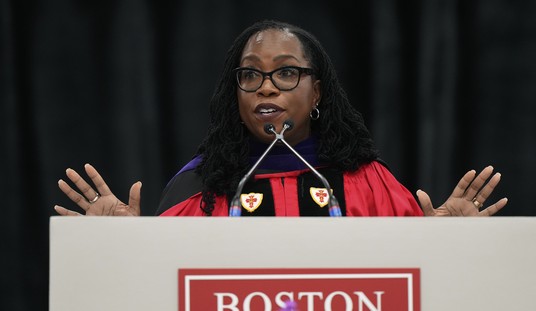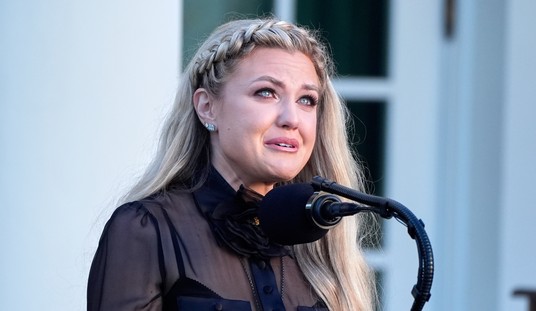In a day when parents and children rarely watch the same TV shows, Christmas TV specials and holiday movies still somehow manage to continue to bring families together.
These days it’s even easier than it used to be to share these traditions. ABC Family has made an art out of holiday programming with their “25 Days of Christmas” programming blocs that package specials throughout the month of December. Home video and streaming services also allow families to watch programs whenever they want.
In the spirit of Christmas, I’m offering to you this list of the ten most essential specials and movies of the season.
We’ll start with a pair of very different types of animation from a production company synonymous with Christmas specials…
10. The Year Without a Santa Claus
Arthur Rankin and Jules Bass are synonymous with their stop-motion Christmas specials of the ‘60s and ‘70s. Viewers not familiar with their names will recognize their unmistakable round-headed characters, candy-colored landscapes, and softly falling snow. A few of their specials are on this list, starting with The Year Without a Santa Claus.
In this 1974 special, Mrs. Claus (voiced by Shirley Booth) tells the story of the year Santa (voiced by Mickey Rooney) decides — on doctor’s orders — to take a vacation. Two of his elves and the young reindeer Vixen take a trip to find enough Christmas spirit to cheer Santa up. Along their way, the elves battle the Heat Miser and Snow Miser and visit Southtown, USA, where they get lost. Santa journeys south to find Vixen and discovers that the children of the world need him. He can’t skip Christmas.
The Year Without a Santa Claus is a clever story with some memorable scenes and catchy songs, including those involving the villains.
It’s not as ubiquitous as Rudolph the Red-Nosed Reindeer or Santa Claus Is Coming to Town, but The Year Without a Santa Claus is trippy holiday fun.
Another Christmas special that has stood the test of time is Frosty the Snowman. Originally aired in 1969, Frosty vaguely follows the story line of the popular Christmas song. The special tells how the kids who built Frosty help him escape to the North Pole while trying to elude the magician whose hat brought him to life.
The special is a Rankin/Bass production but it’s a traditional cartoon, not the company’s signature stop-motion. Rankin and Bass hired a Japanese company to animate the show and it has a decidedly different look from most animation of the period. Jimmy Durante provides the narration and performs the title song.
Looking back the animation in Frosty is poor and the special as a whole is a bit cheesy but it’s still nostalgic Christmas fun.
Next up is a movie about one boy’s quest for a special Christmas gift. Don’t poke your eye out!
Some of our Christmas television classics originated on the big screen. One started out as a sleeper in theaters and grew in popularity with repeated small-screen airings. It became so popular that one family of cable networks has run 24-hour marathons of the film every Christmas Eve for the last 14 years. Of course I’m talking about 1983’s A Christmas Story.
A Christmas Story is based on the semi-autobiographical works of humorist and storyteller Jean Shepherd. The film is a loving look at boyhood Christmas memories from the 1940s. All Ralphie Parker wants for Christmas is a Red Ryder BB Gun. Every adult to whom he mentions his Christmas wish — from his parents to his teacher to the department store Santa — gives him the same response: “You’ll shoot your eye out!” The movie continues with a series of episodes and subplots, ending on Christmas day when Ralphie receives his prized gift.
The film is full of hilarious and iconic scenes.
In its initial release, A Christmas Story earned mixed reviews and decent box office. It was after its first broadcast on HBO and subsequent basic cable airings that the film graduated from cult status to full-fledged holiday tradition. In 1997, TNT aired its first 24-hour A Christmas Story marathon. The tradition moved to sister network TBS in 2004. The Turner networks have shown A Christmas Story over 250 times. Not bad for a little $2 million movie.
7. Santa Claus Is Comin’ to Town
Here’s another Rankin/Bass special that has become a perennial favorite during the Christmas season. The 1970 show Santa Claus Is Comin’ to Town tells how an orphan baby became Santa Claus. These days, we call it an “origin story,” and this charming special goes into detail to tell Santa’s beginnings.
Mail carrier S. D. “Special Delivery” Kluger (voiced by Fred Astaire) narrates the tale. The Kringle family of toymakers finds a baby on their doorstep. They adopt him and name him Kris. As Kris (voiced by Mickey Rooney) grows up, his ambition is to make the Kringles the premier toymakers in the land. He melts the heart of the Winter Warlock, falls in love with a teacher named Jessica, and delivers presents to the children of Sombertown, where toys are outlawed. He is arrested, but the Winter Warlock helps him and Jessica escape. An outlaw in Sombertown, he changes his name to Santa Claus and moves to the North Pole where his legend grows.
The special bears all the hallmarks of a classic Rankin/Bass production: stop-motion animation, doll-like figures — though Kluger is designed to look like Astaire — and fantastical winter scenes. The inspiring message of the program is that the way for the world to find joy is for everyone to give of themselves and share their talents the way Santa Claus does.
The special drags a bit in some places and has a slightly darker tone than most Rankin/Bass productions, and the original songs are nowhere near as memorable as the title tune. But like other fondly remembered shows, Santa Claus Is Comin’ to Town has become a nostalgic holiday treat.
One of the most enduring Christmas television traditions is Frank Capra’s 1946 It’s a Wonderful Life. The fantasy film became a holiday institution in the ‘70s and ‘80s, and the American Film Institute named it to their list of the 100 best movies of all time in 1998.
James Stewart plays George Bailey, a small-town businessman who, after a series of mishaps, contemplates suicide on Christmas Eve until a guardian angel shows him what life would be like had he never been born. George learns the positive effects he has had on the town of Bedford Falls and concludes that he has truly led — you guessed it — a wonderful life.
As beloved as the film is today, it’s hard to believe that It’s a Wonderful Life was a box office disappointment. However, the critics adored it and five Academy Award nominations followed. Through the years, It’s a Wonderful Life has achieved legendary status as a holiday classic, thanks to countless broadcasts on television.
It’s a Wonderful Life is a truly heartwarming and uplifting film, and it has captured its share of the cultural zeitgeist. A multitude of television shows and movies have either paid tribute to it or parodied it in some way — of course, in its own way it’s a tribute to Charles Dickens’ A Christmas Carol. There’s enough holiday cheer and goodwill in this movie to forgive Ted Turner for his efforts to colorize the film in the 1980s. Almost.
The most recent Christmas film to ascend to the “classic” level is Jon Favreau’s 2003 comedy Elf. A massive hit in theaters, Elf continues to draw high ratings on television.
Elf stars Will Ferrell as Buddy, a human raised by elves at a North Pole which resembles a Rankin/Bass special. When Buddy discovers that he isn’t an elf, he travels to New York City to meet the father (James Caan) who doesn’t know he exists. Buddy connects with his family, falls in love with a beautiful woman (Zooey Deschanel), and restores the spirit of the Christmas season to jaded New Yorkers.
While it’s true that Buddy the Elf is basically a riff on Ferrell’s typical man-child characters and that the film relies on a few fish-out-of-water cliches, Elf works because of Buddy’s exuberance and innocence. Turning a naif like Buddy loose in New York City makes for great comedy, and Ferrell nails the role.
Many of the other performances are wonderful too. Deschanel is a captivating ingenue, and Caan is gruff and cynical as Buddy’s biological father. Bob Newhart is gently sweet as Buddy’s adoptive elf father, and Peter Dinklage is hilarious as a curmudgeonly children’s author whom Buddy mistakes for an elf.
Elf is such a treat because the jokes never wear thin, the performances are memorable, and the Christmas spirit in the film is so infectious. I suspect it will be a holiday tradition for years to come.
Plenty of adaptations of Charles Dickens’ A Christmas Carol have come and gone, but one of the most enduring is Disney’s retelling: Mickey’s Christmas Carol, initially shown as a theatrical short in 1983.
Mickey’s Christmas Carol remains mostly faithful to Dickens’ original story, while adding classic Disney characters to the mix. Of course, Scrooge McDuck stars as Ebenezer Scrooge while Donald Duck appears as Scrooge’s nephew Fred. Mickey Mouse is Bob Cratchit, and his nephews Morty and Ferdie Fieldmouse are the Cratchit children, Peter and Tiny Tim.
Of course, the spirits Scrooge encounters are portrayed by some of the most inspired character choices. Goofy lends his inimitable brand of slapstick to the ghost of Jacob Marley, tripping over his chains and warning Scrooge of the consequences of his coldhearted lifestyle. Jiminy Cricket, Willie the Giant, and Pete the Dog appear as the hosts of Christmas Past, Present, and Yet to Come.
The juxtaposition of Dickens’ sometimes dark story and the whimsical Disney characters help the cartoon strike the balance between gravity and lightheartedness. The faithfulness to Dickens’ plot is unique among animated literary adaptations. It’s a timeless, classic tale told in a way that only Disney can, and that’s what makes it work.
Mickey’s Christmas Carol was greeted with generally favorable reviews, good box office, and an Academy Award nomination. With its television airings and the advent of home video, the special has become an enduring tradition for new generations of young fans. It’s easy to see why.
3. How the Grinch Stole Christmas
One of the most beloved holiday specials is How the Grinch Stole Christmas. Based on the book by Dr. Seuss, the show first aired on CBS in 1966. Forget the 2000 Jim Carrey movie (no really, please forget it) — the original television production is the definitive version of this classic Christmas story.
Legendary animator Chuck Jones talked a reluctant Dr. Seuss into adapting the book into a television special and the author contributed to the script and song lyrics. The Grinch, a hermit who lives on Mt. Crumpit, despises Christmas and is determined to ruin it for the denizens of nearby Whoville. Disguised as Santa, the Grinch manages to steal the residents’ Christmas presents and decorations, only to find that the Whos’ celebration does not depend on material possessions. As a result, he has a change of heart. The show blends prickliness and sweetness in just the right way.
Two things set How the Grinch Stole Christmas apart from other holiday specials: Boris Karloff‘s excellent voice work as both the narrator and the Grinch and Thurl Ravenscroft’s unforgettable, though uncredited, performance of “You’re a Mean One, Mr. Grinch.” Karloff and Ravenscroft add the right amount of curmudgeonliness to the program, and without them the show would be much less magical. (Let’s face it — it would merely be a Jim Carrey movie.)
Clearly both the special and the character have resonated throughout pop culture for many years. “Grinch” has become equal to “Scrooge” as an epithet against those with insufficient Christmas spirit. The media often co-opt the name “Grinch” to refer to anyone who seeks to deny someone else’s happiness.
The fact that How the Grinch Stole Christmas is still well-loved speaks to how well Dr. Seuss’ message resonates with viewers. The program still draws high ratings and continues to make lists of memorable Christmas specials. For a character with a heart “two sizes too small,” the Grinch has somehow managed to capture a special place in American culture.
2. Rudolph the Red-Nosed Reindeer
The best known and most loved Rankin/Bass classic is Rudolph the Red-Nosed Reindeer. First aired in 1964, Rudolph was the first Rankin/Bass holiday program and is the longest-running Christmas special of all time. Burl Ives performs the narration and some of the songs.
Rudolph is a reindeer at the North Pole with a nose that lights up like a red light bulb. As a result, he is ostracized by his fellow reindeer. He runs off with Hermey, an elf who wants to be a dentist. They meet a prospector named Yukon Cornelius and visit the Island of Misfit Toys. A few months later, Rudolph grows up, returns to the North Pole and saves his family from the Abominable Snow Monster. On Christmas Eve, Santa fears that a blizzard may prevent him from delivering toys, until he realizes that the very trait that set Rudolph apart can help him make Christmas a reality.
The program is based on Johnny Marks’ classic song, and it remains more faithful to its source material than any other special centered around a Christmas carol. The special launched its own hit song in “A Holly Jolly Christmas.”
Interestingly enough, unlike other Rankin/Bass specials which featured multiple celebrity voices, Ives was the only well-known voice actor in Rudolph. Elf pays tribute to Ives’ character with a snowman voiced by singer Leon Redbone.
Rudolph the Red-Nosed Reindeer remains the gold standard for Rankin/Bass stop-motion specials. Nearly 50 years after its initial release, it’s as entertaining as ever.
Some Christmas specials are wonderful traditions. Others are veritable institutions. A Charlie Brown Christmas falls into the latter category. First broadcast on CBS in 1965, A Charlie Brown Christmas carries with it the right amount of sincerity, humor, and class to remain timeless.
In the spring of 1965, Coca-Cola approached producer Lee Mendelson about a Charlie Brown Christmas special. Mendelson went to his friend Charles M. Schulz with just one day to come up with an outline for a half-hour special. Schulz insisted on three things: that the special include a skating scene, that the score include jazz music in addition to Christmas carols, and that the characters tell the true meaning of Christmas. (For those who want to know more about the making of the special, I recommend Mendelson’s book, A Charlie Brown Christmas: The Making of a Tradition.)
Produced in a mere six months — unheard of at the time for 30 minutes of animation — A Charlie Brown Christmas garnered nearly unanimous positive reviews and high ratings. It has aired at least once every year since its debut and has served to cement the Peanuts gang in the pantheon of great animated characters.
Everything about A Charlie Brown Christmas works in its own low-key way. The child actors deliver impossibly precocious lines endearingly. Vince Guaraldi’s iconic jazz score is charming and classy. And, of course, the messages conveyed in the special are timeless. Who can forget Linus’ climactic recitation of part of the Christmas story?
Yes, that’s what Christmas is all about, Charlie Brown.
All these essential holiday specials have stood the test of time because they’re joyous and hopeful. They are classics that young and old can enjoy. I hope this season you have the chance to enjoy moments like these with family and friends. Merry Christmas!
If you enjoyed this article check out its sequel: 5 Forgotten Holiday Specials Worth Remembering.










Join the conversation as a VIP Member